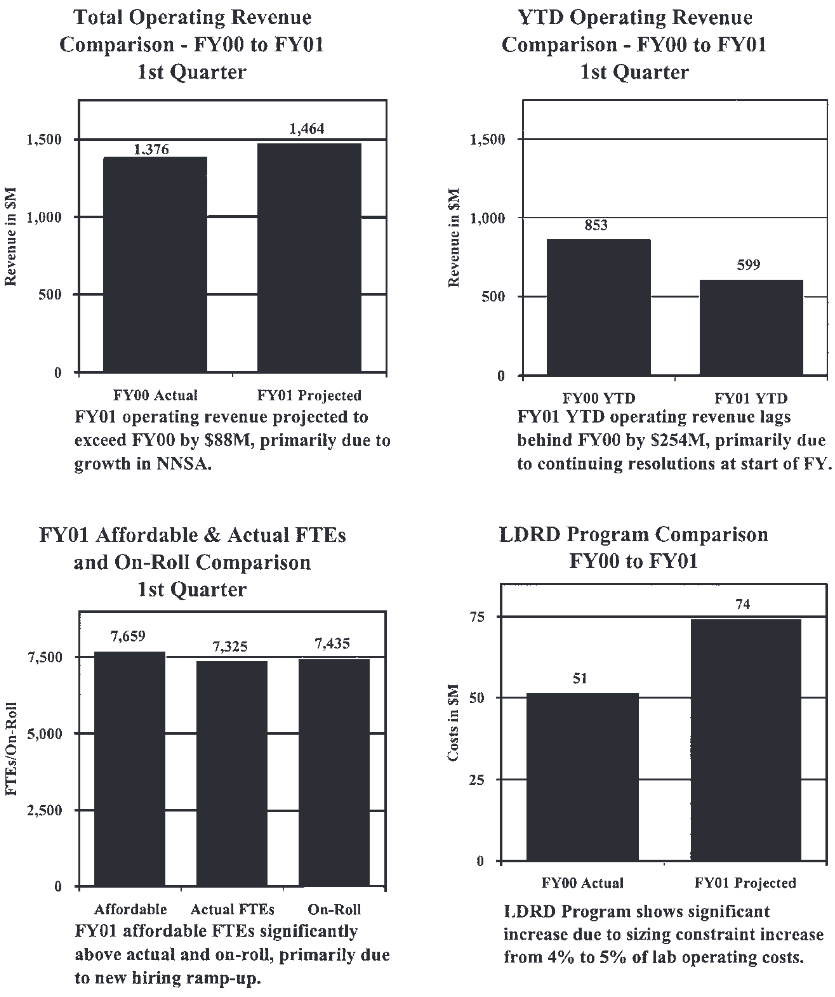‘Fastest gun in world’ accelerates small flyer plates to 20 km/sec
A magnetic field that accelerates pellets faster than anything except a nuclear explosion has been developed experimentally at Sandia. The machine that generates the field has been jokingly dubbed “the fastest gun in the West,” but the description is an understatement.“It’s the fastest gun in the world,” says Sandia physicist Marcus Knudson (1610), lead scientist on the project. The propulsion speed of 20 km/sec —almost three times that necessary to escape the gravitational pull of the Earth (about 7 km/sec) —would send material from New York to Boston in half a minute, and from Albuquerque to Santa Fe in a few seconds.
A typical rifle bullet is propelled at 1km/sec. The machine, Sandia’s Z accelerator, currently propels dime-sized pellets called flyer plates only a few hundred millimeters to gain information on the effect of high-velocity impacts. The data gained can be used to simulate the effect of flying space junk impacting the metal skin of an orbiting observatory traveling in the opposite direction. The data are expected to aid materials scientists trying to balance lightness against strength for satellite and observatory shells.
The technique also has potential as a hyper velocity “kinetic kill” weapon that, emanating from a lighter, more mobile source than the huge Z machine, still could strike disabling blows through an adversary’s heavy armor. These more mobile sources are already in development. Perhaps most important, though least dramatic, the technique is the fastest, most accurate, and cheapest method to determine how materials will react under high pressures and temperatures. These characteristics can then be expressed in formulas called “equations of state”— equations that tell researchers precisely how materials will react if basic conditions like pressure and temperature are changed by specific amounts.Accurate knowledge of equations of state is essential for the US to maintain its nuclear weapons without physically testing them. This Science Based Stock-pile Stewardship Program uses the most powerful computers in the world to pre-dict the result of unimaginably high temperatures and pressures upon materials.
Accurate predictions depend on accurate input about the characteristics of those materials — that is, by a full knowledge of their equations of state.Researchers currently are unable to determine these material characteristics except by the less accurate, more expensive methods of impacting test materials with laser beams, or at lower energies with projectiles from gas-powered guns.The propulsion technique works by applying the Z machine’s 20 million amps to produce an evolving magnetic field that expands in approximately 200 nanoseconds to reach several million atmospheres pressure.
The relatively gentle acceleration produced by the field is similar to that which might be experienced in a very smoothly rising, high-speed elevator, rather than from the shock imparted by a firearm. Accelerated to 13 km/sec, the plates are neither distorted, melted, nor vaporized, as they would be if shot from a gun.When the plate is accelerated to a speed about 20 times faster than a bullet, or 20 km/sec, the more forceful acceleration needed to reach higher velocity causes temperatures of 2,500 K in the flyer plate; this liquefies aluminum flyer plates.
Better understanding of launch configurations is expected to eliminate this problem, though liquidation still is superior to the worst alternative of vaporization — the result if conventional acceleration could be used to reach these speeds. (No power can be delivered from a vaporized pellet.) Characteristics of copper and titanium plates are also being investigated. The plates are accelerated in the vacuum chamber at the core of Sandia’s Z machine, the most powerful producer of electrical discharge on Earth. Sandia scientists last year used Z’s enormous magnetic field to test materials by compressing them— a method called isentropic compression.
In this even newer technique, staggering the firing of Z’s 36 lines eliminates the shock that melts the flyers at the higher velocities. The resultant expansion of the powerful magnetic field propels small objects somewhat the way a surfboarder is propelled who catches one of a succession of enormous waves.A paper accepted by the Journal of Impact Engineering describes techniques that accelerated the plates to 13 km/sec.A paper to be submitted this spring to the Journal of Applied Physics shows how improving the configuration of the loads increased the speed of the “flyer plates” to 20 km/sec. The work is funded primarily by DOE.
Spotlight on Sandia

Welcome to the first quarterly report of Sandia’s financial health. Frank Figueroa, VP 10000 & CFO, and his folks in the Controller’s Organization10500 developed these charts specifically for publication in the Lab News to show Sandia’s financial status in various areas.
The charts will be updated and published each quarter. The subject matter of three of the charts — those dealing with total operating revenue, year-to-date operating revenue, and afford-able vs. actual full-time-equivalent employee counts — will be the same each quarter. The fourth chart, the one at the lower right, will highlight a different aspect of Sandia’s financial health each quarter. For this first report, the chart shows the change in Sandia’s Laboratory Directed Research and Development(LDRD) program from FY00 to FY01. The significant increase is primarily due to the increase in the sizing constraint from 4 percent for FY00 to 5 percent inFY01 of total operating costs.